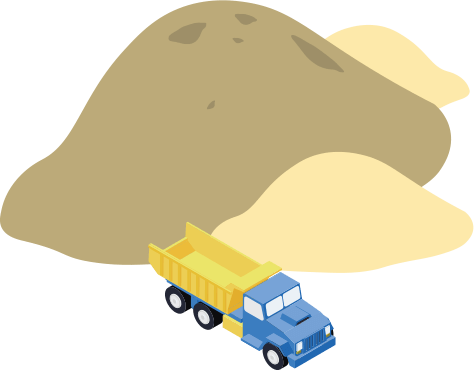For clarity in your marketing, it is important to understand the various pieces of the marketing puzzle, where your weaknesses are, and what your immediate and longer term goals are in regards to these pieces.
When I say “pieces of the puzzle”, I’m referring to the marketing chain – the various steps from “someone never heard of you” to “a confirmed repeat customer client or patient”.
This is similar to what is often called the “promotional mix” – which misses the point that it is actually a sequence of actions, any one of which if sorely lacking can torpedo all your marketing efforts.
I was reminded of this, talking to a prospect whose marketing goals do not include lead generation. He sells to government agencies, who put projects out to bid. His problem is to make sure he is allowed to bid on a project and that the agencies are properly impressed by his qualifications and experience.
The usual classification of the “promotional mix” is advertising, sales promotion, personal sales, and public relations. I categorize things a bit differently:
1. Branding. This is marketing not designed to generate leads but simply to build awareness and reputation. It helps ready the potential market place for lead generation. Publicity and Public Relations activities fall into this territory as well (they are not strictly speaking part of marketing).
2. Advertising. Any type of marketing activity designed to generate leads, whether by search engine rankings, click ads, print ads, direct mail, trade shows, Yellow Pages ads, etc. etc. If it gets the word out, offers a product or service and makes someone want it, it is in this category. I include sales promotions (special offers, discounts, giveaways, etc.) in this category. Any action to generate word-of-mouth or referral business would also fit under this.
3. Educational Marketing. This would cover any materials or activities that are designed to take someone with some degree of interest, and build that interest level to a point where they are ready to buy or at least talk turkey. Most websites fall in this category. It is or should be its own category because it doesn’t create awareness – it takes some degree of awareness and builds interest and credibility to a point where the person is a sales prospect.
4. Sales Materials. This can be anything from product packaging to the slickest sales presentation materials. They are there to seal the deal or help the salesman do so. In the case of an online store, or point-of-purchase in low-priced retail sales, there is no live sales person involved. So I don’t categorize this as “personal sales” as that isn’t inclusive enough as a term.
5. Sales Confirmation / Customer Satisfaction Marketing. “Thank you for your purchase of the special 100 ounce Guido’s Preserves. We know you’ll enjoy them, and as a token of our appreciation, here is a discount coupon worth 10% off your next purchase from the Guido Company Store.” “Please fill out our survey and let us know what you think of our product.” Its purpose is to prevent back-out and to help ensure you have a happy customer thus a prospect for further purchases. Make no mistake about it, this is a marketing function, completely separate from customer service / tech support.
6. Customer Base Marketing. Any material or activity addressed to current, inactive or past and lapsed customers, clients or patients – to maximize further sales to anyone who has purchased in the past.
I think this is a superior means of classification as each category applies in one way or another to every business. In the case of the prospect I mentioned above, “lead generation” consists of looking up “RFQ’s” (Requests for Quote”) from various governmental agencies.
Of course the emphasis varies. #6 is probably not big for Funeral Homes.
This provides a tool for examining your marketing and seeing your strengths, weaknesses AND OPPORTUNITIES.









